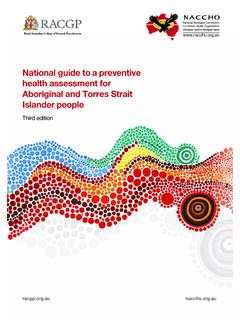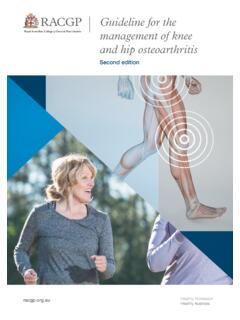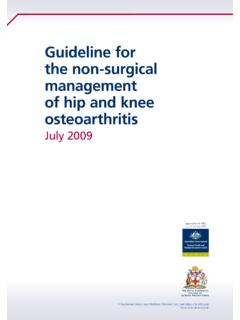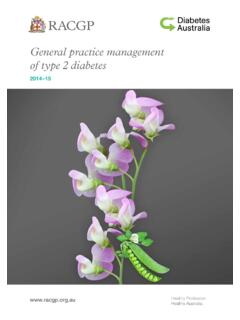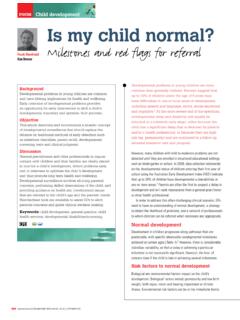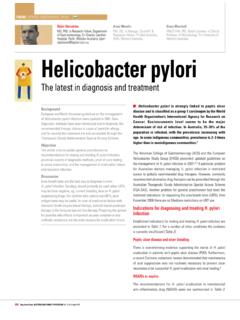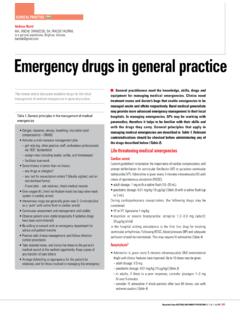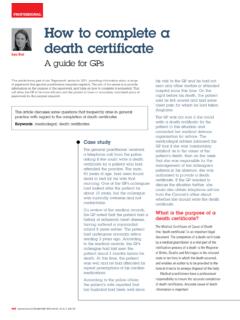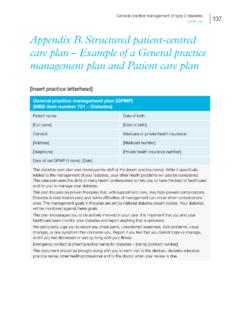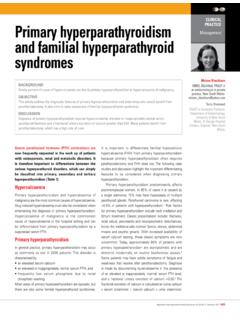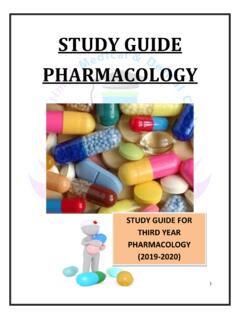Transcription of ENT • CLINICAL PRACTICE Ear examination
1 Reprinted from Australian Family Physician Vol. 34, No. 10, October 2005 4 857 Ear problems represent a significant proportion of cases seen in primary PRACTICE both in paediatric and adult patients. The majority of these ear problems can be diagnosed on the basis of CLINICAL examination of the ear alone. This can be achieved simply with an otoscope and tuning fork without the need for further tests or delay. The purpose of otoscopic examination is to evaluate the condition of the ear canal, tympanic membrane and the middle ear. However, the ear canal and tympanic membrane are not easy to examine because of their relative inaccessibility and the need for both magnification and illumination.
2 The physician s diagnostic skill with otoscopy depends on a practical understanding of the anatomy of the ear, a suitable choice of otoscope and speculum, and a reliable examination technique. Equipment Choosing an otoscopeA suitable otoscope with a pneumatic attachment is essential for reliable and accurate otological examination (Figure 1). It is essential that the otoscope is fully charged before each examination . An undercharged otoscope will produce poor light and impart an artificial yellow tinge onto the tympanic membrane. This may potentially lead to the misdiagnosis of straw coloured middle ear fluid.
3 For this reason, an otoscope with a direct power source or re-charging facility is ideal in the examination room a speculumThe largest speculum that comfortably fits within the external auditory canal should be chosen when examining the ear. This permits optimal visualisation and illumination. The adult external auditory meatus is about 7 mm in diameter. Therefore, otoscopy should be performed through a speculum of similar size. Such a large speculum allows the entire tympanic membrane to be visualised from one position of the otoscope, and optimises patient comfort during the examination as force is exerted around the entire circumference of the ear canal.
4 In contrast, a smaller speculum transmits force on only one point of the ear canal and is therefore more uncomfortable. Furthermore, otoscopy through an inappropriately small speculum, requires separate examination of each quadrant of the tympanic membrane in order to generate a composite image of the entire structure. This requires constant re-positioning of the speculum within the ear canal. In adults, a 5 mm inner diameter speculum is appropriate. Children have narrower canals and hence a speculum with an inner diameter of 4 mm is generally suitable.
5 For otoscopy in babies, speculums of mm inner diameter are required. Examining the earBoth ears must always be examined, and if disease is unilateral, it is advisable to examine the normal ear first. This allows variation in normal anatomy to be appreciated for that particular patient, and in the case of the discharging ear, avoids the possibility of cross infection. The outer earA systematic examination of the ear always begins with a careful inspection of the auricle and postauricular skin. Any tenderness, obvious abnormalities, discharge or surgical scars should be noted.
6 Evidence of either a localised or generalised skin disorder may also be present. The presence of enlarged pre- or post-auricular lymph nodes can also be assessed. Phillip Chang, FRACS, is an ear surgeon, St Vincent s Hospital and Sydney Children s Hospital, and CLINICAL Director, The Shepherd Centre for Hearing Impaired Children, New South Wales. Pedler, BSc (Med), is a final year medical student, the University of New South examinationA practical guide ENT CLINICAL PRACTICE858 3 Reprinted from Australian Family Physician Vol. 34, No. 10, October 2005 CLINICAL PRACTICE : Ear examination A practical guideUsing the otoscopeThe otoscope is always held by the physician in the hand that correlates with the side of the ear to be examined, ie.
7 The patient s right ear is examined with the otoscope in the examiner s right hand; the left ear is examined with the otoscope in the examiner s left hand. The otoscope is held using one of two techniques: Pencil grip technique: the otoscope is held like a pencil between the thumb and index finger, with the ring and little fingers resting against the patient s temple (Figure 2) Pistol grip technique: the o t o s c o p e i s gripped in the palm of the hand and the dorsal aspect of the index finger rests against the patient s cheek (Figure 3).Both techniques ensure that the examiner s hand rests against the side of the patient s face.
8 This means that if the patient moves, the otoscope will move in unison. This technique ensures stability of the physician s view along the ear canal and the patient s comfort during the examination (Table 1). Before inserting the speculum, the tortuous external ear canal must first be straightened. In adults this is achieved by using the free hand to gently lift the pinna upward and backward. In children, the canal is straightened by pulling the pinna horizontally backward (Figure 2, 3). It is essential to keep the canal straight throughout the examination as this keeps the tympanic membrane in view.
9 The external meatus is inspected before carefully introducing the speculum into the canal under direct vision. A systematic approach to examining the ear ensures the identification of any abnormalities. The external canal should always be routinely inspected for infection, debris and bony narrowing such as exostoses. The features of the tympanic membrane and middle ear should be systematically examined including the malleus, the cone of light, pars tensa and pars flaccida of the ear drum. Through the translucency of the tympanic membrane normal middle ear structures can often be identified (incus and stapes) as well as middle ear anomalies such as fluid (Figure 4a h).
10 Examining a childWhen examining a child, both the head and body need to be gently immobilised to facilitate a safe and thorough otoscopic examination . This is best achieved by examining the child while seated on their parent s lap with the parent restraining the child with one hand placed firmly on the forehead, holding the side of the child s head against their chest and the other arm around the child s arms and body (Figure 5). Table 1. Advantages of using a large speculum with otoscopy Allows superior visualisation and illumination within the ear canal Displays the entire tympanic membrane from one position of the otoscope Permits an air-tight seal for pneumatic insufflation More comfortable for the patientTips for successful otoscopy Inform the patient (or parent)
